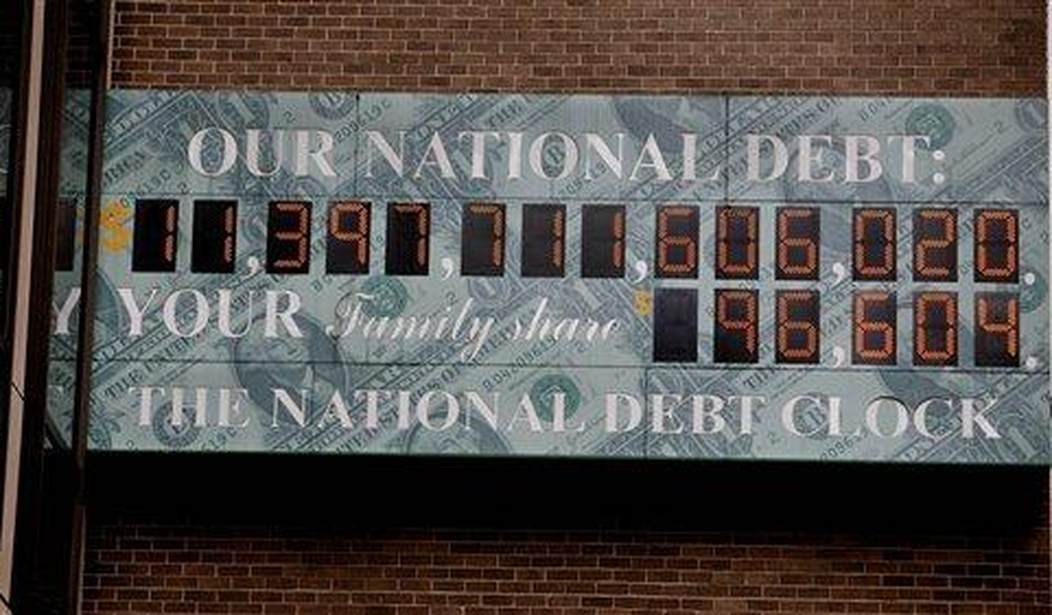Since the federal government, with the consent of both parties, just lit another 1.7 trillion dollars of imaginary money on fire, the generally quiet period between Christmas and the new year might be an opportune time to consider an important matter that has been almost completely ignored by both elected officials and the media. That would be the national debt. In case you hadn’t noticed, America’s debt has now reached a staggering level of 31.3 trillion dollars. That’s a figure so huge that it’s almost impossible to wrap your brain around it. In the Boston Globe this week, business and finance reporter Jim Puzzanghera has raised an important red flag, warning that this level of debt represents a “rapidly growing death spiral” for our nation. As he correctly points out, the gargantuan debt number obscures a more pressing crisis for the country. The federal government has to pay interest on that debt every year and as you may have heard, the Fed has been steadily raising interest rates ever since the Biden recession began. We had to pay nearly $400 billion in interest in 2022 and that figure is currently projected to climb to nearly $1.2 trillion over the next decade.
Like a consumer grappling with a massive credit card balance, the federal government is paying more just for the interest on the national debt. Government projections show those interest costs tripling from $399 billion this year to $1.19 trillion in 2032. Borrowing most likely will have to increase just to pay for the higher interest expenses.
And on it goes, a vicious cycle that promises bruising fights over debt and spending in Washington next year, partisan conflict which could shake financial markets and an economy already at risk of falling into recession.
“If you’re borrowing more and more every year on autopilot to fund programs that we promised, which [you] lack the revenue to pay for, you then have a compounding problem where interest on the debt compounds and just adds to the burden,” said Michael A. Peterson, chief executive of the Peter G. Peterson Foundation.
Currently, the country’s GDP is sitting at roughly $32 trillion, virtually the same as our national debt. Put in a way that may be easier to comprehend, we are now on track to wind up paying interest that will equal more than three percent of the nation’s entire economic output in the next decade. Over the following two decades, the CBO projects that figure will surpass seven percent. That’s simply not sustainable, and the house of cards is going to collapse at some point.
A senior official at the centrist Bipartisan Policy Center think tank described the situation for the Globe as being the equivalent of termites under your porch. “They’re working away at it, you don’t see them, but one day you step out on that porch and you go through it.”
So what happens when we can no longer service that debt? There are two options. The first is that we start massively slashing spending on a variety of popular (and in some cases critical) programs, including social security and Medicaid. The other choice is that we begin to default on portions of the debt and our nation’s credit rating is marked down again, growing closer and closer to junk bond status. And when the faith of the world in America’s ability to pay its debts collapses, so too does our entire economy. We would see an era that would make the great depression look like a holiday picnic and it would take generations to recover, assuming we could.
How did we ever let things get this far out of whack? Perhaps we’ve stopped paying attention to our gargantuan national debt because we’ve become too numb to be shocked by it anymore. If you walk past one dead body on the sidewalk near your home, you would no doubt be horrified and immediately call the authorities. But if you’re in the middle of a war zone and you march past hundreds of bodies each day, you eventually stop noticing them and just get on with the mission.
Unfortunately, this is one situation that we won’t be able to simply ignore forever. The clock is ticking, and I do not envy the generations of working-class American families who will be stuck holding the bag when that alarm goes off.








Join the conversation as a VIP Member